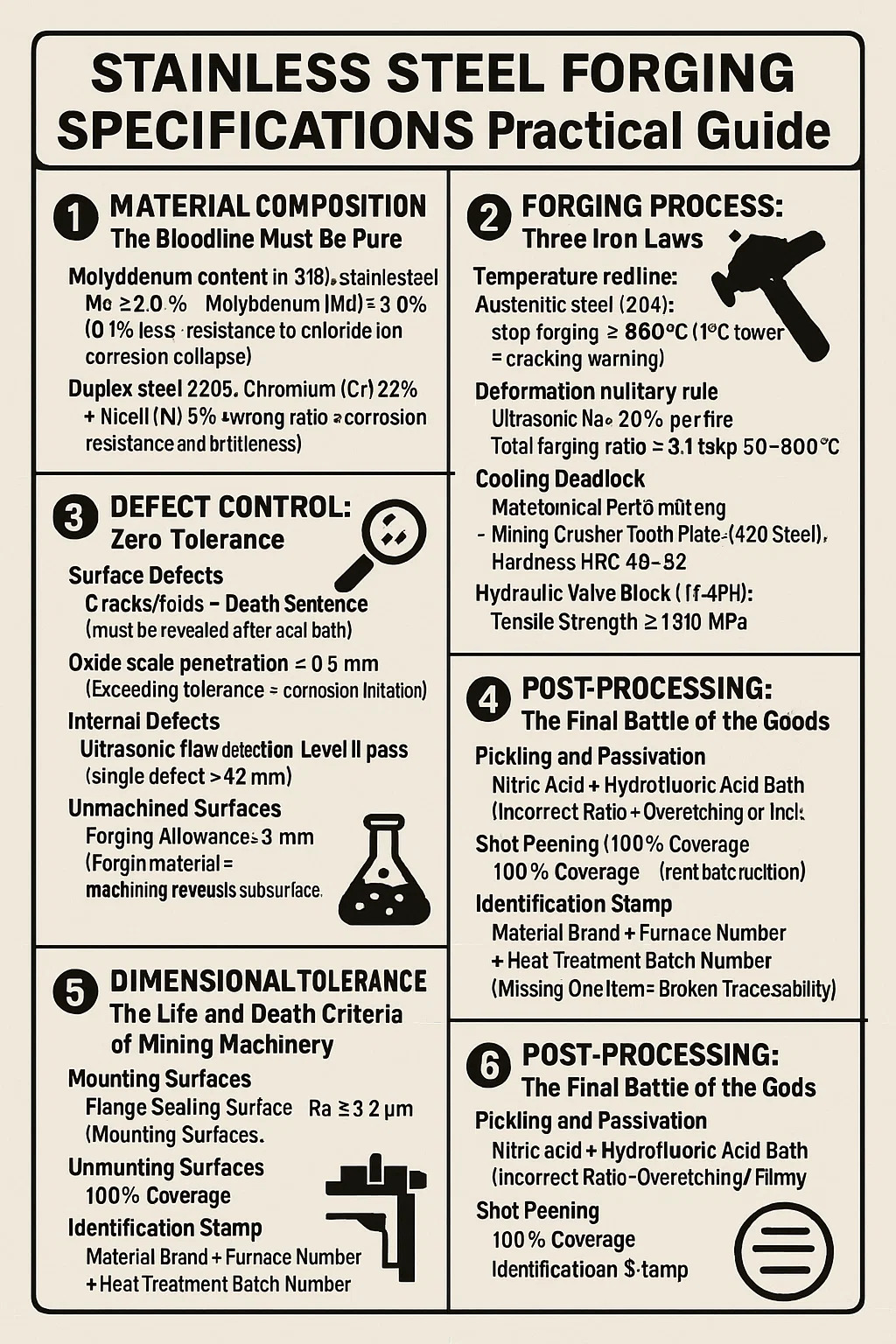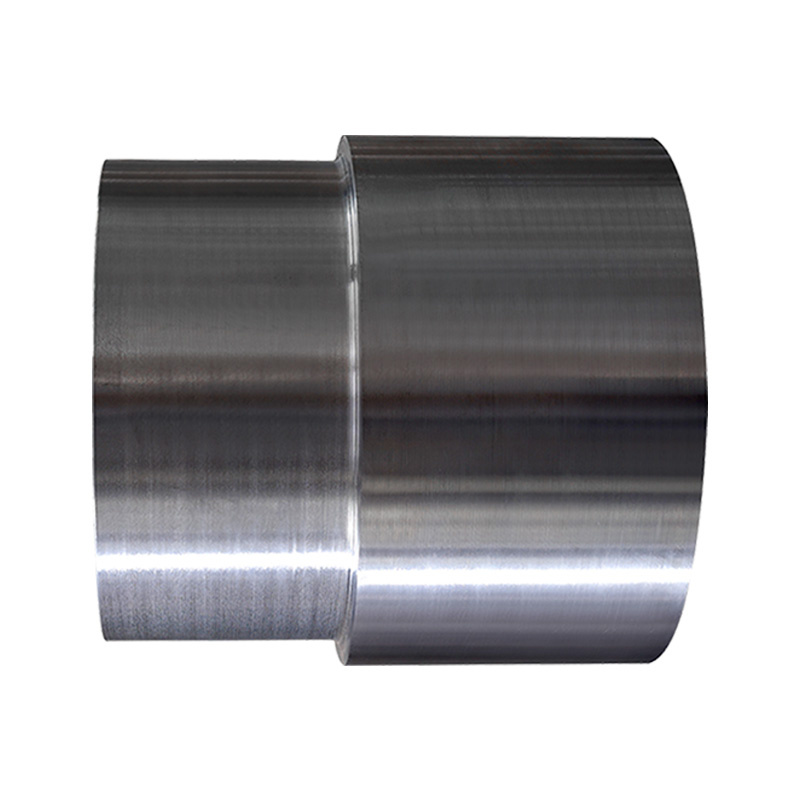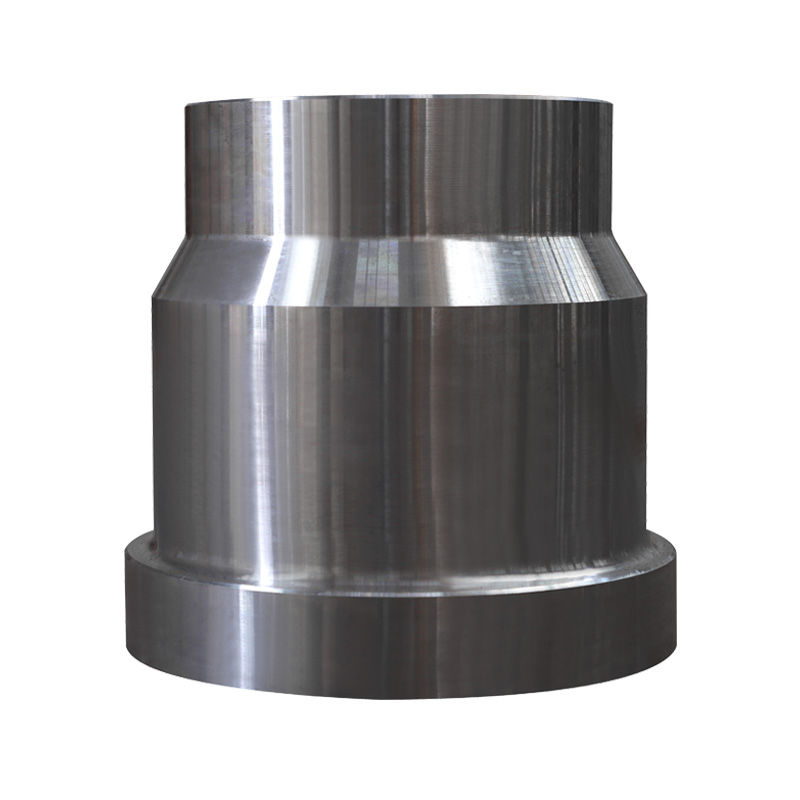Stainless Steel Forging Specifications Practical Guide
Content
1. Material composition: The bloodline must be pure
Chromium, nickel and molybdenum content is stuck:
316L stainless steel: Molybdenum (Mo) ≥ 2.0% (0.1% less = resistance to chloride ion corrosion collapse).
Duplex steel 2205: Chromium (Cr) 22% + Nickel (Ni) 5% (wrong ratio = corrosion resistance and brittleness).
Carbon content is pressed to the limit: Ultra-low carbon steel (such as 304L) carbon ≤ 0.03% (0.01% more = double the risk of intergranular corrosion).
2. Forging process: three iron laws
Temperature red line:
Austenitic steel (304): stop forging ≥ 850℃ (1℃ lower = cracking warning).
Martensitic steel (420): heating ≤ 1180℃ (5℃ over = grain coarsening and scrap).
Deformation military rule:
Deformation ≥ 20% per fire (lazy small forging = core not compacted = corrosion risk).
Total forging ratio ≥ 3:1 (Insufficient forging = Residual as-cast structure = Reduced performance).
Cooling Deadlock:
Martensitic steel: Immediately enter a slow cooling pit after forging (air cooling = cracks).
Austenitic steel: Skip water quenching at 500-800°C (slow cooling = carbide precipitation = zero corrosion resistance).
3. Defect Control: Zero Tolerance
Surface Defects:
Cracks/folds = Death Sentence (must be revealed after acid bath).
Oxide scale penetration ≤ 0.5mm (Exceeding tolerance = corrosion initiation point).
Internal Defects:
Ultrasonic flaw detection Level II pass (single defect ≤ φ2mm = baseline for high-voltage mining parts).
White spots/hydrogen embrittlement = veto (forging internal bomb).
4. Performance Indicators: Practical Testing
Corrosion Resistance Must-Test:
Intergranular Corrosion Test (Boiled in sulfuric acid and copper sulfate for 24 hours): No cracks upon bending (one crack = entire batch rejection). Pitting Corrosion Potential (3.5% NaCl Solution): 316L ≥ 0.25V (low potential = premature failure in seawater conditions).
Mechanical Performance Deadline - Mechanical Performance Deadline:
Mining Crusher Tooth Plate (420 Steel): Hardness HRC 48-52 (low = wear, high = chipping).
Hydraulic Valve Block (17-4PH): Tensile Strength ≥ 1310 MPa (soft = high-pressure leakage, brittle = bursting).
5. Dimensional Tolerance: The Life and Death Criteria of Mining Machinery
Mounting Surfaces:
Flange Sealing Surface: Roughness Ra ≤ 3.2 μm (roughness = slurry leakage).
Shaft-Hole Fit: Tolerance h7/H7 (loose = vibration disengagement, tight = thermal expansion seizure).
Unmachined Surfaces:
Forging Allowance ≥ 3 mm (stingy material = machining reveals subsurface defects).
6. Post-Processing: The Final Battle of the Gods
Pickling and Passivation:
Nitric Acid + Hydrofluoric Acid Bath (Incorrect Ratio = Overetching or Incomplete Film) → Fully Passivated, Bright White Surface.
Shot Peening:
100% Coverage (Missed Shots = Fatigue Crack Initiation).
Identification Stamp:
Material Brand + Furnace Number + Heat Treatment Batch Number (Missing One Item = Broken Traceability = Prohibited).


 英语
英语 德语
德语 阿拉伯语
阿拉伯语












